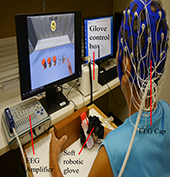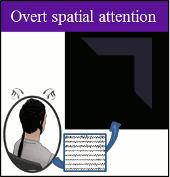Design a Novel BCI for Neurorehabilitation Using Concurrent LFP and EEG Features: A Case Study
IEEE Transactions on Biomedical Engineering (TBME)
//www.embs.org/tbme/wp-content/uploads/sites/19/2022/06/ieee-tbme-logo2x.png
This work introduced for the first time a novel BCI that incorporate both intracortical LFP and scalp EEG (named, LFP-EEG-BCI) for motor intention decoding during neurorehabilitation. Concurrent intracortical and scalp signals were collected from a paraplegic patient undergoing motor imagery (MI) neurorehabilitation training. A common spatial filter approach was adopted for feature extraction and a decision fusion strategy was further introduced to obtain the decoding results. Transfer learning approach was also utilized to reduce the calibration. The proposed novel LFP-EEG-BCI may lead to new directions for developing practical neurorehabilitation systems in clinical applications.
read more



